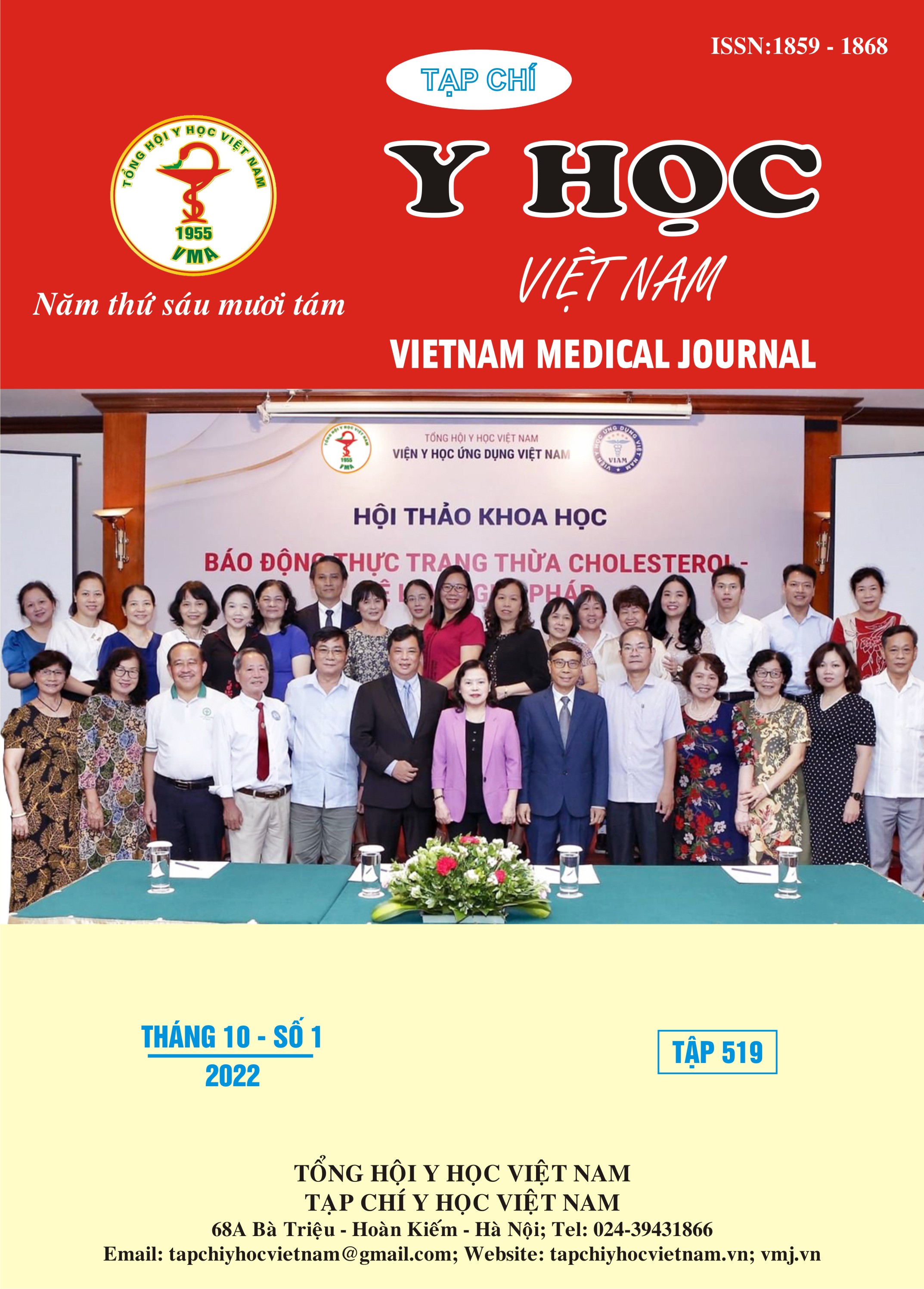DIFFERENTIATION BETWEEN GLIOBLASTOMA AND SOLITARY METASTASIS: THE ROLE OF DIFUSION TENSOR IMAGING AND THE QUANTITATIVE ANALYSIS BASED ON FLAIR SIGNAL INTENSITY
Main Article Content
Abstract
Purpose: The purpose of this study is to investigate the diagnostic utility of difusion tensor imaging (DTI) and fluid-attenuated inversion recovery (FLAIR) in differentiating between glioblastoma (GBM) and solitary metastasis (MET) by analyzing fractional anisotropy (FA), mean diffusivity (MD) value of DTI and FLAIR signal intensity. Materials and methods: Fifty patients with GBM and MET who underwent conventional and DTI on 3 Tesla MRI, surgery or biopsy and had histopathologic reports at the Viet Duc Hospital were retrospectively reviewed. Three regions of interest (ROI) were placed in the enhancement region of the tumor, the peritumoral edema, and the opposite normal white matter on FA map, MD map and FLAIR in order to measure FA, MD value and signal intensity. The diagnostic value of the significant difference parameters between two entities was analyzed by using the receiver operating characteristic (ROC) curve. Results: In the peritumoral region, FA value (qFA) of GBM was significantly greater but the FLAIR signal (qFLAIR) was lower than that of MET (p<0,05). The FA, MD values, FLAIR signal in the enhancing region (uFA, uMD, uFLAIR) and the ratio of FA value between the enhancing region to opposite normal white matter (u/tFA) in GBM were both significantly greater than those of MET (p<0,05). Combining the uFA, uMD, uFLAIR, u/tFA, u/tFLAIR, qFA values provided the highest area under the curve (AUC) of 0,975, the sensitivity 88,6% and specificity 100% in distinguishing GBM and MET. Conclusions: The uFA, uMD, uFLAIR, u/tFA, u/tFLAIR, qFA are useful parameters for differentiation between GBM and MET. The combination of those values may increase the diagnostic performance.
Article Details
Keywords
DTI, glioblastoma, solitary brain metastasis, diagnosis
References
2. Lee EJ, Ahn KJ, Lee EK, Lee YS, Kim DB. Potential role of advanced MRI techniques for the peritumoural region in differentiating glioblastoma multiforme and solitary metastatic lesions. Clin Radiol. 2013;68(12):e689-697. doi:10.1016/j.crad.2013.06.021
3. Tang YM, Ngai S, Stuckey S. The solitary enhancing cerebral lesion: can FLAIR aid the differentiation between glioma and metastasis? AJNR Am J Neuroradiol. 2006;27(3):609-611.
4. Chen XZ, Yin XM, Ai L, Chen Q, Li SW, Dai JP. Differentiation between Brain Glioblastoma Multiforme and Solitary Metastasis: Qualitative and Quantitative Analysis Based on Routine MR Imaging. Am J Neuroradiol. 2012;33(10):1907-1912. doi:10.3174/ajnr.A3106
5. Caravan I, Ciortea CA, Contis A, Lebovici A. Diagnostic value of apparent diffusion coefficient in differentiating between high-grade gliomas and brain metastases. Acta Radiol Stockh Swed 1987. 2018;59(5):599-605. doi:10.1177/0284185117727787
6. Byrnes TJD, Barrick TR, Bell BA, Clark CA. Diffusion tensor imaging discriminates between glioblastoma and cerebral metastases in vivo. NMR Biomed. 2011;24(1):54-60. doi:10.1002/nbm.1555
7. Wang S, Kim S, Chawla S, et al. Differentiation between glioblastomas and solitary brain metastases using diffusion tensor imaging. NeuroImage. 2009;44(3):653-660. doi:10.1016/j.neuroimage.2008.09.027
8. Skogen K, Schulz A, Helseth E, Ganeshan B, Dormagen JB, Server A. Texture analysis on diffusion tensor imaging: discriminating glioblastoma from single brain metastasis. Acta Radiol Stockh Swed 1987. 2019;60(3):356-366. doi:10.1177/0284185118780889


